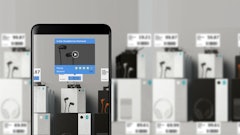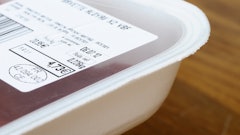
In today’s food and beverage industry, consumer delivery services are not just an added convenience; they’re a crucial component of business operations. The ubiquity of delivery options has revolutionized the way food reaches consumers, setting new standards for speed and convenience. However, this shift has not come without its challenges.
As consumers increase their orders with third-party delivery marketplaces, food businesses face numerous hurdles that impact efficiency and customer satisfaction. From high fees eroding margins to order batching impacting food quality, the current state of food delivery is rife with issues that need a real resolution.
Understanding the challenges in today’s food delivery sector is critical for any food and beverage business striving to meet modern consumer demands. Many of the common solutions offer only short-term relief because they fail to address underlying systemic issues.
Let’s delve deeper into these persistent problems and why reactive measures fall short. Then we’ll explore the strategic, forward-thinking solutions that address these challenges at the source.
Problem 1: High fees and hidden costs
The substantial fees associated with third-party platforms are eroding profit margins and consumer trust. The costs and fees to consumers using these platforms – whether it’s vague “service fees” on top of delivery charges or discrepancies at checkout – are growing exponentially while food quality is often decreasing.
This is causing more and more consumer distrust and dissatisfaction, which a restaurant has very little control to fix. A restaurant might try offering discounts and lowering your prices to increase order volume, but this is only a short-term solution and doesn’t turn a significant profit.
Problem 2: Food waiting
One of the biggest problems with food delivery is the amount of time food sits between preparation and arrival at the consumer’s home, leading to degraded food quality as items lose their ideal temperature and freshness. The waiting can occur in multiple places throughout the process. First: food sitting once it has been prepared until the driver arrives. Because there is no coordination between a restaurant kitchen and third-party delivery drivers, food gets prepared as soon as it's convenient for the restaurant, no matter how far away the driver may be.
Secondly, food can sit for extended lengths of time after the order has been picked up by the driver. Third-party delivery platforms have recently started to optimize their operations by batching multiple orders into one trip. Some drivers are even doing this manually to maximize their earnings. This often results in significant delays, food integrity issues, and frustrated consumers – as the first order picked up might be the last delivered.
A restaurant may respond to this by investing in higher-quality packaging or attempting to time food preparation more accurately with driver arrivals. But at the end of the day, these investments fail to solve the fundamental issue: A restaurant can’t control what happens once food leaves the establishment.
Problem 3: Mishandling and food safety
The variability in how third-party couriers handle food can lead to serious food safety concerns. When you’re dealing with new drivers all the time, it’s difficult to ensure they follow the proper protocols. And truthfully, third-party drivers don’t work for you, and have little incentive to follow protocols anyway. Without direct control over who delivers your food and how, there’s always a risk of improper food handling. And you’ll be the one left paying chargebacks.
In an attempt to control this, a restaurant might conduct random checks or introduce tamper-evident packaging. However, there are so many variables involved with inconsistent, untrained, and often unsupervised drivers. No single measure can catch or eliminate every potential issue.
In-house delivery: A proactive solution to delivery challenges
Instead of relying on stopgap solutions, an in-house delivery system allows food businesses to directly address the root causes of delivery issues. Unlike third-party platforms, in-house first-party delivery puts the restaurant back in control of the entire process – from taking orders to the final handoff to the guest.
This control enables businesses to implement proactive solutions that ensure consistency in delivery quality and service. For instance, by managing your own fleet of dedicated, on-demand drivers, you can ensure they are well-trained and adhere strictly to food safety regulations. Additionally, in-house drivers are more efficient, which can lower fees to consumers. Affordability improves loyalty and increases the likelihood of repeat orders.
Leveraging delivery management software for seamless in-house, first-party operations
Delivery management technology is essential for businesses looking to efficiently manage an in-house, first-party delivery system. The best systems proactively address prevalent issues related to delivery, such as order inaccuracies, delayed delivery types, and inconsistent guest experiences.
The best delivery management technologies are comprehensive. They don’t just manage the logistics of delivery – they revolutionize the entire process. Features like flexible order-to-driver assignments and dedicated on-demand drivers enhance efficiency, effectiveness, and affordability, setting a new standard in delivery operations.
As the food and beverage industry continues to grow – alongside growing consumer expectations for speed and convenience – the importance of a strong delivery foundation becomes increasingly important. Continuing to rely on stopgap and reactive solutions will only pile complexity on top of complexity. By rebuilding with the right technologies and strategies, food businesses can ensure they’re equipped to meet modern consumer demands effectively and sustainably, thereby securing a competitive edge in a rapidly evolving market.





















